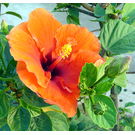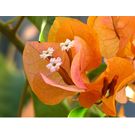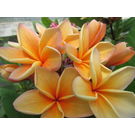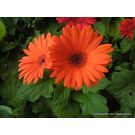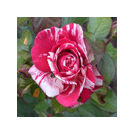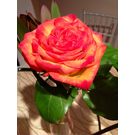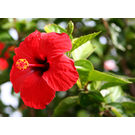Bird Of Paradise ( Orange) Plant
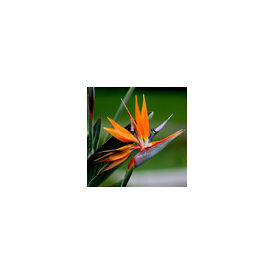
Description
Bird-of-paradise or crane flower (Strelitzia reginae) is a native of South Africa and is closely related to the banana. The herbaceous plant derives its common names from the unique flower it bears, which resembles a brightly colored bird in flight. The leathery leaves are held upright on stiff leafstalks and are about 6 inches wide and 18 inches long. The plant forms a 3- to 5-foot-tall clump that can be used as a focal point in the landscape or in mass plantings. The evergreen leaves of bird-of-paradise do not drop from the plant, which makes it an excellent addition around pools or wherever shedding leaves are an aesthetic and/or maintenance problem.
Bird-of-paradise makes an attractive landscape plant throughout Florida although it requires cold protection in the northern part of the state. The plant will tolerate temperatures as low as 24°F for a short time; however, freezing temperatures will damage developing flower buds and flowers. To ensure flower production in north Florida, grow bird-of-paradise in a container that can be moved indoors during freezes.
The showy bloom is actually a combination of blue petals and orange sepals that emerge from a beak-like bract (modified leaf). Blooms appear intermittently most of the year. Healthy, mature plants can produce as many as three dozen flower spikes a year, which will last up to two weeks when cut.


